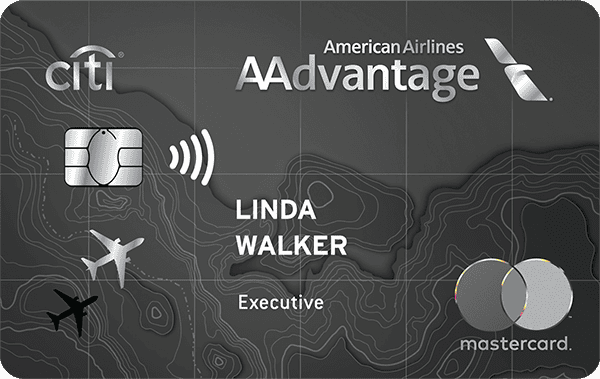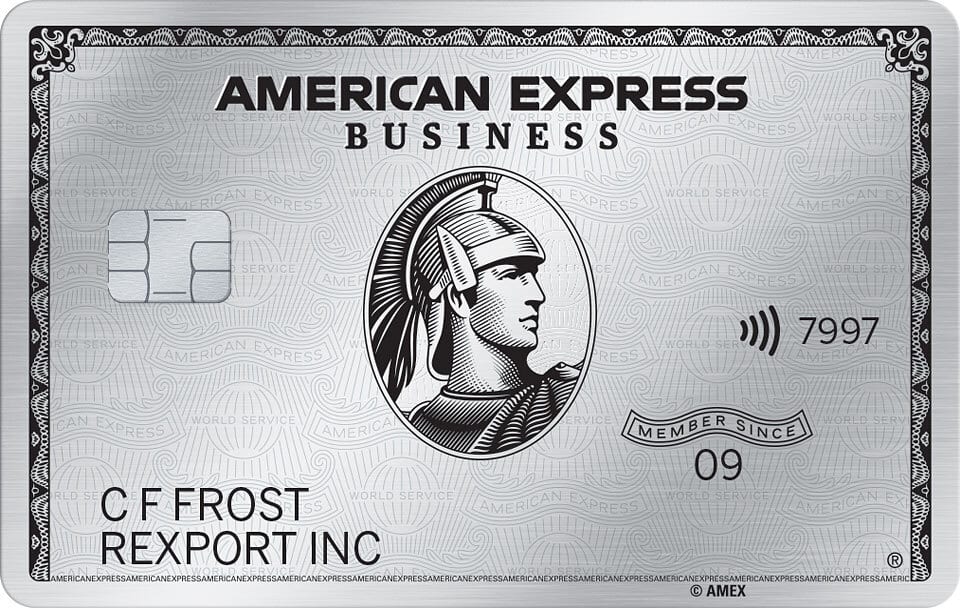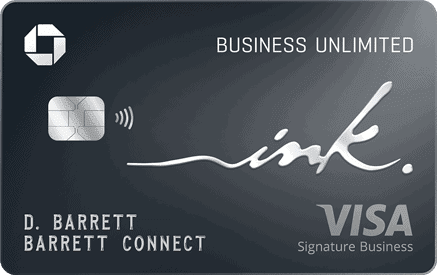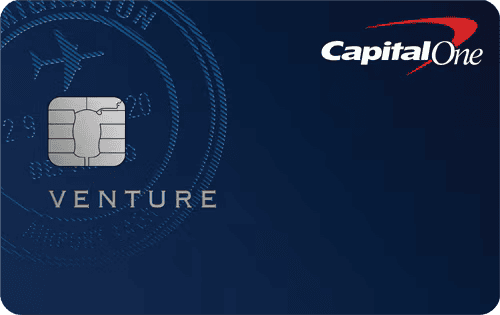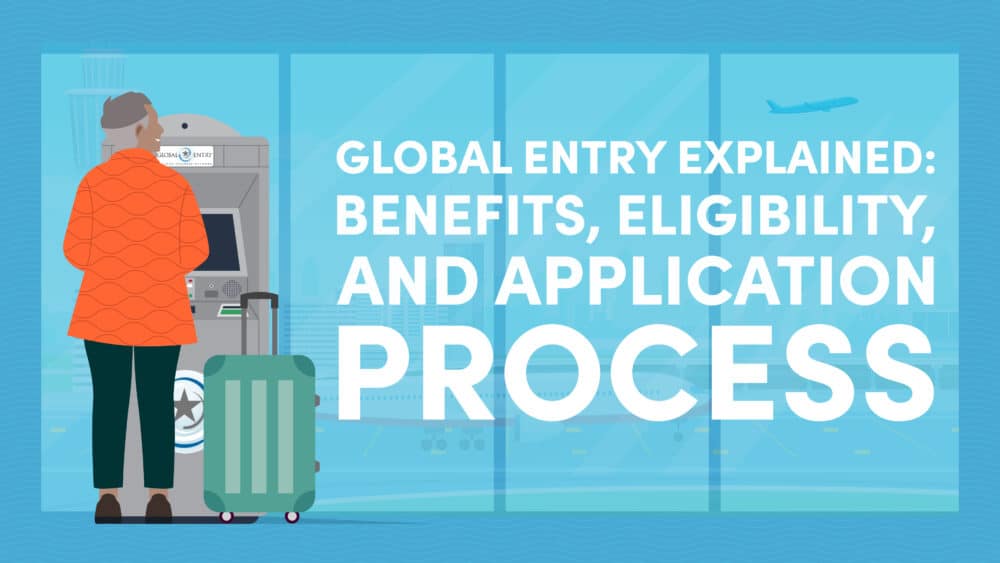
10xTravel is part of an affiliate sales network and receives compensation for sending traffic to partner sites, such as CreditCards.com. This compensation may impact how and where links appear on this site. This site does not include all financial companies or all available financial offers. Terms apply to American Express benefits and offers. Enrollment may be required for select American Express benefits and offers. Visit americanexpress.com to learn more.
Note: Some of the offers mentioned below may have changed or may no longer be available. The content on this page is accurate as of the posting date; however, some of our partner offers may have expired. You can view current offers here.
Citi is an advertising partner.
Note: Check out recent updates to trusted traveler programs such as Global Entry, Nexus and SENTRI.
As security processing and checks have only become more stringent in the past years, the ability to avoid the hassle of long lines and unpacking carry-on baggage is always welcome. That’s where Global Entry and TSA PreCheck® offer the frequent flyer a significant advantage.
Let’s dive deep into TSA PreCheck versus Global Entry, analyzing their differences, pros and cons. We’ll also cover which cards can get you free membership through statement credits.
What Is Global Entry?
Since 2008, Global Entry has provided expedited Customs and Border Protection processing for pre-approved travelers. What started as a pilot program at a handful of airports now supports more than 5 million “low-risk” travelers nationwide.
Global Entry is a trusted traveler program offered by the U.S. Customs and Border Protection (CBP) agency.
For frequent flyers and especially those who take regular international flights, Global Entry is designed to make your return into the U.S. quicker and more efficient. This is achieved by trading queues, paperwork and face-to-face identity verification checks with interactive kiosks.

Photo by James Tourtellotte, courtesy of U.S. Customs and Border Protection
Global Entry Advantages
As a Global Entry member, you’ll skip the long immigration lines and proceed directly to a Global Entry kiosk where facial recognition technology will verify your identity. If you have nothing to declare, then you’ll be able to continue through passport control, toward your next destination.
At some airports, Global Entry kiosks issue a receipt which you can then give to a CBP officer. However, this has been simplified at most airports, with receipts no longer being printed. On the off chance that no kiosks are available, you’ll still have access to front-of-the-line privileges in the standard passport control queues.
Global Entry members also receive a Known Traveler Number (KTN), which grants them access to TSA PreCheck, expediting the physical security screening process.
Global Entry kiosks are available at more than 70 participating airports, both in the U.S. and abroad. International airports with Global Entry kiosks belong to a network of CBP preclearance locations.
These locations enable you to clear through CBP processing before entering the U.S. and include the following international airports:
| Abu Dhabi, United Arab Emirates (AUH) | Montreal (YUL) |
| Aruba (AUA) | Nassau, Bahamas (NAS) |
| Bermuda (BDA) | Ottawa, Ontario (YOW) |
| Calgary, Alberta (YYC) | Shannon, Ireland (SNN) |
| Dublin (DUB) | Toronto (YYZ) |
| Edmonton, Alberta (YEG) | Vancouver, British Columbia (YVR) |
| Halifax, Nova Scotia (YHZ) | Winnipeg, Manitoba (YWG) |
Likewise, Customs and Border Protection has partnerships with 15 other countries, enabling certain non-U.S. citizens to apply for Global Entry.
Global Entry members are also eligible for CBP’s following global partnerships:
- Australia’s and New Zealand’s Smartgate system
- The Netherlands’s Privium program
- Korea’s SES program
- Panama’s Global Pass
- Taiwan’s e-Gate
- Germany’s EasyPASS
- Mexico’s Viajero Confiable
Note: These programs may require additional interviews, background checks and application fees.
Be aware that although Nexus members gain access to Global Entry kiosks and benefits, Global Entry members aren’t able to use Nexus kiosks when entering Canada.
Global Entry Disadvantages
Global Entry comes with a host of advantages for the frequent international traveler. However, there are some factors to consider when applying for membership.
First, the interview process and background checks are more extensive compared to TSA PreCheck. Given that Global Entry grants expedited identity verification checks for travelers entering the U.S., some of whom are non-U.S. citizens, Global Entry applicants can expect a more rigorous background check and interview.
Likewise, there are far fewer enrollment centers where you can conduct your interview compared to the widespread availability of Transportation Security Administration (TSA) enrollment centers. This disadvantage can be mitigated by opting to enroll on arrival at one of the more than 60 participating airports abroad and in the U.S.
Similarly, not just anyone can apply for Global Entry. Unless you’re a U.S. citizen, U.S. lawful permanent resident or a citizen of one of the countries CBP shares an agreement with, you won’t be eligible for membership.
On top of this, Global Entry comes with a higher nonrefundable application fee of $120 for five years, compared to TSA PreCheck that costs $85 for five years. In this case, you need to ensure that your travel goals revolve around international flights to offset the higher fee. That being said, considering Global Entry includes TSA PreCheck member benefits, the higher fee is justified.
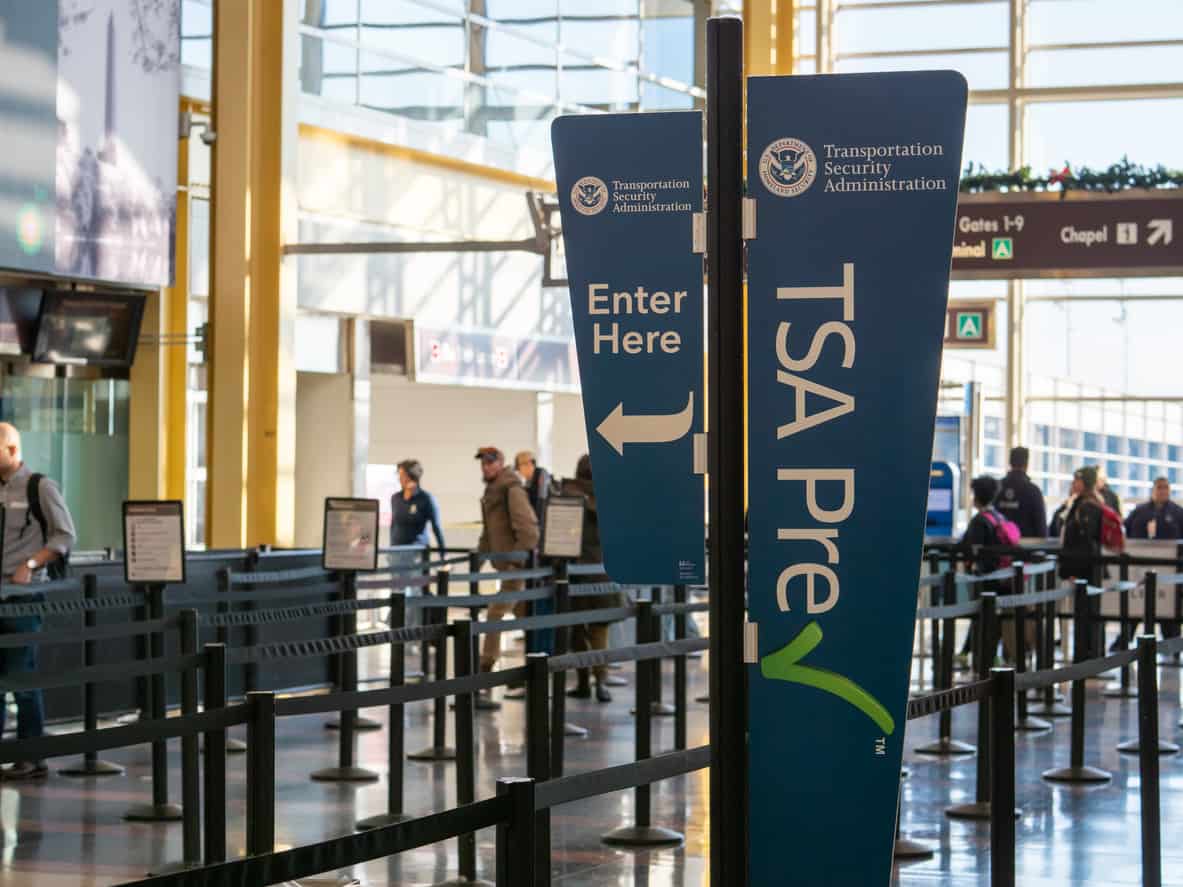
What Is TSA PreCheck?
For frequent travelers, the stress of unpacking and repacking your electronics and liquids with one hand while holding your unbelted pants up with the other is a familiar experience. Since 2013, TSA PreCheck has put an end to this stress for pre-approved low-risk air, sea and land travelers.
TSA PreCheck is run by TSA and belongs to the family of trusted traveler programs. For frequent international flyers, TSA PreCheck is a godsend for saving you time and stress during security checkpoints.
TSA PreCheck is also included in Global Entry and Nexus membership.
TSA PreCheck Advantages
When traveling through airports in the U.S. and its territories, TSA PreCheck members won’t be required to remove laptops, small liquids, belts, shoes or light jackets. Instead, you’ll be expedited through physical security screening via dedicated PreCheck lanes.
This not only saves you time and offers a less intrusive security experience but also reduces the probability of forgetting valuables during the repacking process.
Compared to Global Entry, the application process is fairly straightforward and less intensive. After submitting an online form, you’ll complete your enrollment at a TSA enrollment center, which are far more widespread than those of Global Entry.
Similarly, the nonrefundable application fee for TSA PreCheck is less compared to that for Global Entry, making it more affordable.
TSA PreCheck Disadvantages
For domestic travelers, TSA PreCheck ticks all the boxes. However, when it comes to passing through international customs, TSA PreCheck won’t get you far in terms of expediting the process. That’s where Global Entry comes in handy.
Keep in mind that TSA may still subject you to standard physical security screening processes, even as a PreCheck member. The officers often perform random security screening on TSA PreCheck members, so don’t be surprised if you’re selected.
Unlike with Global Entry, only U.S. citizens and lawful permanent residents are eligible to apply for TSA PreCheck. That being said, non-U.S. citizens from eligible countries can apply for Global Entry, which includes TSA PreCheck.

Cost
As already mentioned, when it comes to Global Entry vs. TSA PreCheck costs, the TSA PreCheck price comes out on top.
So, how much does TSA PreCheck cost?
Global Entry has a nonrefundable application fee of $120 while TSA PreCheck costs up to $85 (the price varies depending on where you register).
Membership for both programs lasts five years, at the end of which you’ll need to renew if you want to keep your enrollment active. In terms of TSA PreCheck vs. Global Entry renewal fees, TSA PreCheck comes out on top again.
If you renew your TSA PreCheck membership with Idemia, an in-person renewal will cost you $78 while online renewals will cost you $70. If you renew via Telos, subsequent online and in-person renewals cost $70.
Compare this to Global Entry, which charges $120 for subsequent renewals and offers no discounts to existing members.
Likewise, Global Entry is required for every traveler looking to go through an expedited immigration line, regardless of their age. However, children under the age of 18 aren’t charged a fee if their legal guardian is enrolled in the program or in pending status.
TSA PreCheck doesn’t require children under the age of 18 to have their own membership account, as long as they’re traveling with adults on the same reservation who have TSA PreCheck. There are no TSA PreCheck fees for children.
The only exception to this would be if a child between the ages of 12 and 17 was traveling alone, in which case they would require their own TSA PreCheck membership to access the PreCheck lanes.
As of now, neither TSA PreCheck or Global Entry offer discounts for senior citizens.
Eligibility
To be eligible for TSA PreCheck, you need to be a U.S. citizen, lawful permanent resident or U.S. national. Incomplete or false application information, specific violations of federal security regulations and disqualifying criminal offenses will all result in ineligibility.
For Global Entry, applicants need to be U.S. citizens, lawful permanent residents or a citizen from one of the following countries:
| Argentina | Germany | Singapore |
| Bahrain | India | South Korea |
| Brazil | Mexico | Switzerland |
| Canada (via Nexus membership) | Netherlands | United Kingdom |
| Colombia | Panama | Taiwan |
Note: Regulations and citizenship requirements can change frequently. Check the Global Entry website for the latest rules.
Non-U.S. citizens from a qualifying country should still check the CBP International Arrangements page for the latest country-specific rules and requirements.
Global Entry membership may be denied due to false or incomplete application information, criminal convictions, inadmissibility to the U.S., a personal history of violation of laws in any country or if you’ve been denied for the purchase of a firearm.
For children under the age of 18, parental or guardian consent is required for them to create a Global Entry account.
Overall, for both TSA PreCheck and Global Entry, if you can’t prove that you’re a low-risk traveler, your application will be denied.

Application Process
The application processes for both TSA PreCheck and Global Entry follow similar steps.
For TSA PreCheck, you’ll begin by going to their enrollment website and entering basic personal information as well as answering some questions. You can choose to enroll either through Idemia or Telos and submit an online form through one of these providers. After having done this, the next step is scheduling an interview at an enrollment center near you.
You should consider which provider offers enrollment centers nearest to you when deciding between Idemia and Telos. Idemia offers more than 600 enrollment centers with an application fee of $78, while Telos has 350 enrollment centers in the U.S. and charges a slightly higher application fee of $85.
The interview process normally takes around 10 minutes, including fingerprinting, a photo snap and a background check. If you’re successful, you can expect to receive your KTN within two to five days. However, in rare cases it can take up to 60 days. From there onward, just add your KTN to any bookings to benefit from TSA PreCheck privileges.
For Global Entry, you’ll start the application process by creating a trusted traveler account. After submitting the necessary information and paying the application fee of $120, you need to wait for conditional approval. If successful, you’ll then need to book an interview at an enrollment center near you. The interview involves an extensive background check.
Alternatively, you can opt to complete enrollment on arrival, enabling you to attend an interview at one of many airports in the U.S. and abroad.
If you’re successful, your Global Entry card will be mailed to you and should arrive within two to four weeks of approval.
If Global Entry interview appointments near you are booked far out, you can potentially speed up your interview process by signing up for text message and email alerts through Appointment Scanner that notify you of last-minute appointment slots that open.

TSA Pre-Check Screening area at Daniel K. Inouye International Airport in Honolulu, Hawaii.
Additional Considerations for Global Entry and TSA PreCheck
When considering if Global Entry or TSA PreCheck is worth it, you need to think about who you will be traveling with and where.
For example, if international travel plays a large part in you and your family’s vacation plans, you should ensure that all your family members have Global Entry membership.
If you’re the only Global Entry member in the family, either you’ll be expedited and will have to wait for the others to go through regular processing or you’ll have to join them and forget about the Global Entry kiosks altogether. In such cases, it only makes sense when all travelers on the same reservation are Global Entry members.
Of course, if you need to pay for Global Entry membership for you, your spouse and any children who are 18 or older, this can become expensive. (Fees are waived for children under 18 with a legal guardian enrolled in the program or in pending status.) On top of this, application fees are nonrefundable and membership isn’t guaranteed.
For these reasons, you need to ensure that you can justify these costs through frequent travel.
Children under the age of 18 aren’t required to have separate memberships to access the TSA PreCheck lanes, which lowers the initial cost of applying for a family and reduces the risk associated with application denial.
Additionally, military service personnel and Department of Defense (DoD) civilians have access to complimentary TSA PreCheck membership by using their DoD number in the KTN field when booking reservations. The following members are eligible:
- Active Duty Branches of Service
- Reserve Components of the U.S. Military
- National Guard (both Army and Air)
- U.S. Coast Guard and U.S. Coast Guard Reserve
- Students of the U.S. Military Service Academies (USMA, USNA, USAFA, USCGA, USMMA)
- United States Public Health Service (USPHS) Commissioned Corps
- NOAA Commissioned Officer Corps
- Federal Civil Service employees
- Non-Appropriated Fund (NAF) Civilians
While military personnel and DoD civilians are eligible for complimentary TSA PreCheck membership without having to go through an interview process, spouses and family members still have to apply separately.

The Best Credit Cards That Will Reimburse Your Application Fees
While TSA PreCheck and Global Entry are valuable to pay for as standalone programs, you can get their respective application fees reimbursed if you play your (credit) cards right.
Here’s a list of all travel rewards credit cards that offer reimbursements for TSA PreCheck and Global Entry application fees. See terms and conditions of each card for more details and up-to-date information. With all of these cards, you need to pay with the card for the statement credit to be applied:
- Aeroplan® Credit Card
- Bank of America Premium Rewards Credit Card
- Capital One Venture Rewards Credit Card
- Capital One Venture X Rewards Credit Card
- Chase Sapphire Reserve®
- Citi® / AAdvantage® Executive World Elite Mastercard® (Rates & Fees)
- Delta SkyMiles® Platinum American Express Card
- Delta SkyMiles® Platinum Business American Express Card
- Delta SkyMiles® Reserve American Express Card
- Delta SkyMiles® Reserve Business American Express Card
- IHG One Rewards Premier Credit Card
- IHG One Rewards Premier Business Credit Card
- Marriott Bonvoy Brilliant® American Express® Card
- Mastercard® Black Card™
- The Business Platinum Card® from American Express
- The Platinum Card® from American Express
- U.S. Bank Altitude® Reserve Visa Infinite Card
- U.S. Bank Altitude® Connect Visa Signature® Card
- The New United Club℠ Card
- United Quest℠ Card
- United℠ Explorer Card
Let’s take a look at some of the best cards that offer TSA PreCheck and Global Entry statement credits.
Citi® / AAdvantage® Executive World Elite Mastercard®
Earn 70,000
American Airlines AAdvantage® bonus miles
after spending $7,000 in purchases within the first 3 months of account opening.
Annual Fee: $595
Chase Sapphire Reserve®
The Chase Sapphire Reserve® will reimburse you for TSA PreCheck and Global Entry application fees while offering a wide range of premium travel perks.
If you hold the Sapphire Reserve card, offsetting its new $795 annual fee is achievable thanks to its extensive travel perks.
Aside from Chase Sapphire Reserve TSA PreCheck and Global Entry statement credits, the top perks and bonus category spending rates on this card include:
- 8x points on all Chase Travel purchases, including airline tickets and hotels.
- 4x points on flights and hotels booked directly with the provider.
- 3x points on dining worldwide, including eligible delivery services
- 1x point on all other purchases
- $300 annual travel statement credit (note: qualifying purchases do not earn points)
- $500 statement credit for stays with The Edit, Chase’s collection of luxury hotels
- Global Entry, TSA PreCheck®, or NEXUS fee credit of up to $120
- Complimentary Priority Pass Select and Chase Sapphire Lounge by The Club access
- Complimentary IHG One Rewards Platinum Elite status
- Redeem points for up to 2x value on select premium travel with the new Points Boost feature, replacing the previous 1.5x rate
- No foreign transaction fees
Earn 100,000
bonus points + $500 Chase Travel℠ promo credit
after you spend $5,000 on purchases in the first 3 months from account opening.
Annual Fee: $795
The Business Platinum Card® from American Express
The Business Platinum Card® from American Express offers a statement credit toward TSA PreCheck and Global Entry as well as a host of other luxury travel perks.
Despite its high annual fee of $695 (see rates and fees), you can get more than double the annual fee in return value.
Among its best perks are the following:
- Statement credit for Dell Technologies purchases (enrollment required)
- $120 statement credit on U.S. wireless phone purchases, issued in $10 monthly credits (enrollment required)
- Statement credit for purchases with Indeed (enrollment required)
- Statement credit on select business purchases from Adobe Creative Solutions (enrollment required)
- Access to the American Express Global Lounge Collection (1,400+ lounges, enrollment required)
- $200 airline incidental fee credit
- Clear Plus membership fee credit
- Marriott Bonvoy Gold Elite status (enrollment required)
- Hilton Honors Gold status (enrollment required)
- Benefits with the Fine Hotels + Resorts program
- No foreign transaction fees
If you’re stuck between the Chase Sapphire Reserve and The Platinum Card® from American Express, check out this comparison of the Chase Sapphire Reserve vs. Amex Platinum.
The Business Platinum Card® from American Express
150,000
Membership Rewards® Points
after you spend $20,000 in eligible purchases on the Card within the first 3 months of Card Membership.
Annual Fee:
$695
U.S. Bank Altitude® Connect Visa Signature® Card
For no annual fee, the U.S. Bank Altitude® Connect Visa Signature® Card offers a statement credit toward Global Entry or TSA PreCheck membership.
In addition to this perk, the card’s other best features are the following:
- Four annual complimentary Priority Pass lounge visits
- Trip cancellation/interruption insurance benefits
- 5X points on prepaid hotels and car rentals booked directly in the Altitude Rewards Center
- 4X points on travel, at gas stations and EV charging stations on your first $1,000 each quarter
- 2X points at grocery stores, grocery delivery, dining and streaming services
- 1X point on all other eligible purchases
Is TSA PreCheck Included With Global Entry?
To reiterate, TSA PreCheck is included with Global Entry membership.
To use TSA PreCheck lanes as a Global Entry member, ensure to enter your KTN during your booking and ensure that the TSA PreCheck indicator is on your boarding pass.
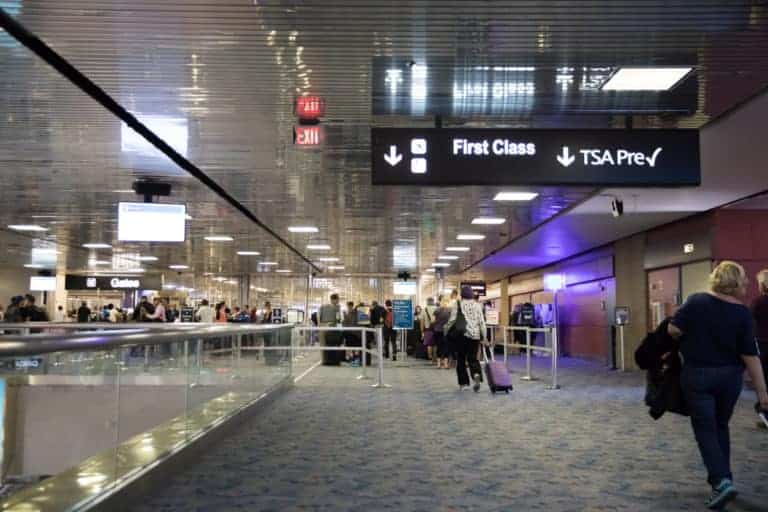
Should You Get Both TSA PreCheck and Global Entry?
If occasional domestic travel is the only option on your horizon, then TSA PreCheck membership will serve your needs. However, if you’re a frequent international traveler, or even a frequent domestic traveler who takes an occasional international flight, then Global Entry is the better choice.
Granted, Global Entry does come with a higher fee, a more stringent interview and background check process as well as fewer enrollment centers. But in return for an extra $42 and a slightly more involved application process, you’ll speed through CBP processing lanes as well as benefit from TSA PreCheck membership on domestic flights, making the higher cost totally worth it.
Other Trusted Traveler Programs
While Global Entry and TSA PreCheck are some of the better known trusted traveler programs, there are some other ones worth mentioning and considering.
Nexus
Founded in 2009, Nexus is a trusted traveler program run jointly by the CBP and the Canada Border Services Agency (CBSA). The program expedites travel between the U.S. and Canada.
When entering the U.S. or Canada, members will have access to Global Entry kiosks or Nexus kiosks, respectively. Given that Global Entry is included in a Nexus membership, this means you’ll also automatically receive TSA PreCheck membership. Note that Mexican nationals who are SENTRI members must first apply for Global Entry membership via their trusted traveler account.
The application fee is $120. While every traveler must enroll, the fee is waived for children under the age of 18. The interview and background check process is more rigorous because you’ll be checked by both the CBP and CBSA.
This makes sense for individuals traveling between the U.S. and Canada frequently.
SENTRI
The Secure Electronic Network for Travelers Rapid Inspection (SENTRI) is another trusted traveler program offered by CBP. Founded in 1995, it offers expedited processing lanes for land travel back into the U.S. from Mexico and Canada.
It has the highest application fee out of all trusted traveler programs, coming in at $120. Every traveler requires a SENTRI account, regardless of age. However, it includes both Global Entry and TSA PreCheck at no extra cost.
SENTRI membership is only justified if you regularly travel by land over the southern border.

Ready to Elevate Your Travel Game?
The Global Entry vs. TSA PreCheck discussion can be simplified to the following.
If you’re a frequent domestic traveler, TSA PreCheck will serve all your needs. However, if international travel plays any role in your life, then paying $42 extra for Global Entry (which includes TSA PreCheck) is well worth it.
If frequent land travel between Mexico and the U.S. is on the agenda, SENTRI membership could make your life easier, while Nexus membership could make the lives of those traveling often between Canada and the U.S. far simpler.
And if you get a credit card that reimburses these application fees through statement credits, then enrolling in these programs is a no-brainer.
Reimbursed TSA PreCheck and Global Entry application fees is just the beginning of what credit cards have to offer. But you need the right strategy to leverage their perks to the maximum. Make sure to keep up with 10xTravel’s latest posts to maximize your credit card earnings and rewards.
Want to learn more about TSA PreCheck and Global Entry? Check out our articles on How to Use Global Entry and How to Use TSA PreCheck.
New to the world of points and miles? The Chase Sapphire Preferred® Card is the best card to start with.
With a bonus of 75,000 bonus points after you spend $5,000 on purchases in the first 3 months from account opening. , 5x points on travel booked through Chase Travel℠ and 3x points on restaurants, streaming services, and online groceries (excluding Target, Walmart, and wholesale clubs), this card truly cannot be beat for getting started!
Editors Note: Opinions expressed here are author’s alone, not those of any bank, credit card issuer, hotel, airline, or other entity. This content has not been reviewed, approved or otherwise endorsed by any of the entities included within the post.



